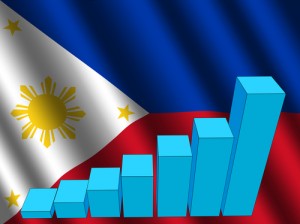MANILA –The International Monetary Fund (IMF) on Wednesday said that the economic growth of the Philippines is slower than what the agency had originally anticipated.
“The second-quarter growth is broadly in line with what we expected, but the first quarter got revised a little so the forecast would somewhat be affected,” said IMF resident representative Shanaka Jayanath Peiris.
From the original 6.7 percent last July, Peiris said that a “small minor adjustment, potentially downwards,” would be made from its 6.2-percent growth forecast for 2015.
He added, “Around six-percent growth is (still) not far-fetched.”
Peiris also admitted that the target of the government of seven to eight-percent gross domestic product (GDP) growth reach for the year might be a challenge.
According to data from the Philippine Statistics Authority, the GDP growth for the first quarter was brought down to five percent from the original 5.2 percent, following the slow growth of the agriculture and mining industries.
However, the economic growth reached 5.6 percent in April to June, according to Budget Secretary Florencio Abad.
Despite this, Peiris said that the IMF is still positive about the country’s economic growth saying that “temporary exogenous factors” are likely to dissipate later in the year.
“It’s actually global factors, including temporary factors. The agriculture is down because of El Niño. Exports are affected by the global slowdown and then there was also the slowdown in public spending, which is picking up,” said Peiris.
He added, “But fixed investments are quite solid, (and) we don’t see this slowing down. So we think overall there is temporary slowdown, but we should have a bounce back in the second half of the year.”
In terms of acceleration, Peiris said that it can be expected until early next year. He said that public spending will increase given that 2016 is elections time.
“The participation of the Philippines in global value chain is another issue. The value added of the Philippine trade sector is very low. The tariffs have gone down, but behind the border costs are still quite high,” said Peiris.“There is a huge opportunity for the Philippines, but we need to address these issues,” he said
